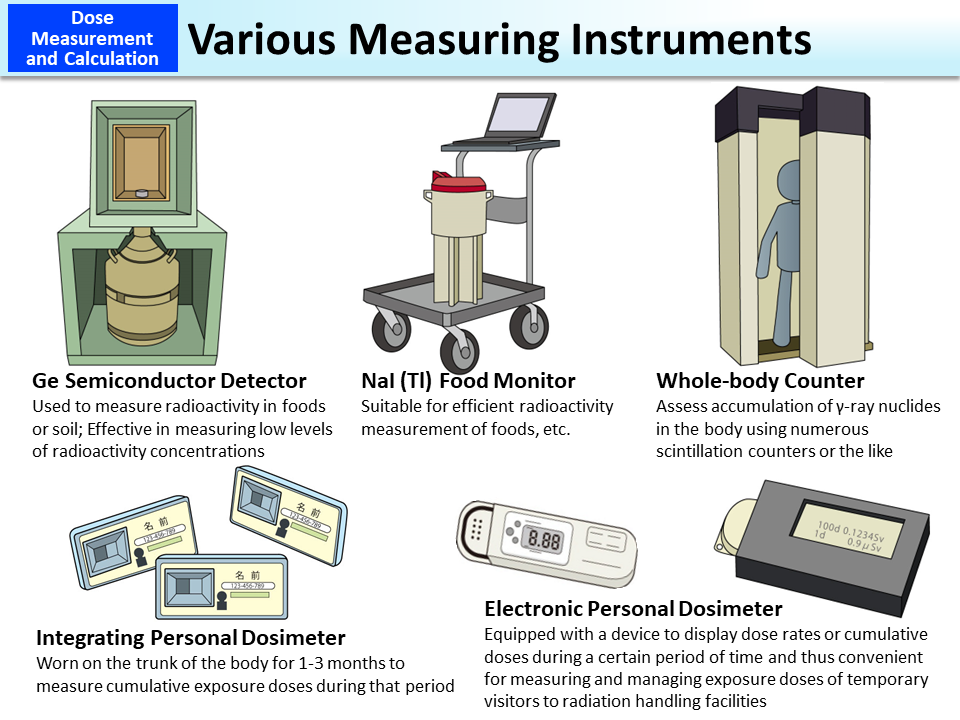Various Measuring Instruments
While radiation is not visible to the human eye, it is known to cause ionization and excitation (p.45 of Vol. 1, “Principles of Radiation Measurement”), and a variety of measuring instruments using these effects have been invented for different purposes and applications. The measuring instruments shown above all utilize the excitation effect.
To measure radioactivity concentrations in foods and soil, measuring instruments wherein a germanium detector (Ge detector) or a NaI (Tl) detector that can measure γ-ray spectra is installed in a lead shield are used. Ge detectors are excellent in γ-ray energy resolution and suitable for determining traces of radioactive materials. NaI (Tl) detectors are not as excellent as Ge detectors in terms of energy resolution but are easy to handle and have relatively high detection efficiency, so they are widely used in food inspection.
Also commercially available are whole-body counters that use numerous scintillation counters or Ge detectors worn on the body to assess accumulation of γ-ray nuclides in the body, as well as integrating personal dosimeters and electronic personal dosimeters for managing personal exposure. In particular, after the accident at Tokyo Electric Power Company (TEPCO)'s Fukushima Daiichi NPS, a variety of electronic personal dosimeters have been invented to allow easy monitoring of information on exposure at certain time intervals.
(Related to p.60 of Vol. 1, “Instruments for Measuring Internal Exposure”)
- Included in this reference material on March 31, 2013
- Updated on March 31, 2017

